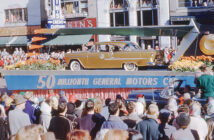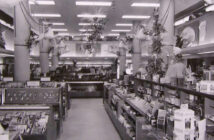A lover of fast machines and fast women, Albert Champion lived one of the most dramatic lives of any of the automobile barons.
Champion was born in Paris on April 2, 1878. In 1899, he lived up to his name when he won the fourth Paris-Roubaix, one of the earliest and most challenging bicycle road races. His need for speed prompted him to switch to motorcycle and later automobile racing in Boston after he immigrated to America. Racing was a notoriously dangerous sport, and Champion was injured in a crash, which left him with one leg shorter than the other for the rest of his life. While racing brought spice to life, fiscal concerns demanded industry. On the side, Champion began selling spark plugs, knowledge of which probably came from his French roots, as France was the dominant manufacturer of spark plugs in the early 20th century. He continued to race until 1904, when he won a race in the Parc des Princes during a business trip to Paris for his company, Champion Spark Plug. Despite the thrill of his win, he never raced again. It is said that while he was lying in his hospital bed, he saw a fellow racer brought in with gruesome injuries and it scared him off the sport forever.
In 1908, Billy Durant, who had just created General Motors, happened to meet Champion one day while in Boston on business. Champion’s spark plugs, which were made with porcelain, intrigued him and he offered to purchase the business and move Albert to Flint. Lawrence Gustin and Terry B. Dunham, authors of The Buick: A Complete History, recount a humorous occurrence that illustrates Champion’s vainglorious character. “Champion was willing to accept” Durant’s offer, report the authors, “but a few days later mentioned that his backers… would not sell the Champion company name. Answered Durant: ‘I’m not interested in the name. I’m interested in the spark plugs.’ To which Champion replied ‘I am very much interested in the name – that’s my name.’”
Champion did take his name with him in his move to Flint, although the Champion Ignition Company, as the new corporation was known, lasted only a few years. In order to avoid a lawsuit with the Champion Spark Plug Company back in Boston, which still exists today, Champion Ignition was renamed AC Spark Plug. The AC stands for Albert Champion, who apparently could not bear to go recognized. His name lives on today in those two company names: Champion Spark Plug, his original Boston company, and AC-Delco, which formed in 1974 as a merger between AC Spark Plug and United Delco. The fact that two companies bear Champion’s name is not an unusual occurrence in the automobile industry: a name often stuck, even when the eponymous individual moved on or sold his company (Buick is a prime example).
It is said that the inventor’s temper flared as brilliantly as his spark plugs. In Champion’s factory on Harriet St. in Flint, Albert’s rage was famous for interfering with work. Gustin and Dunham say that his monumental temper “showed itself almost daily as he walked through his factory, firing employees for any reason – then complaining when the victims were not at work the next day.” Things got so bad that “after a while, an associate followed Champion around, rehiring employees as fast as the boss fired them.”
With a colorful character like this, it seems fitting that Champion’s death was dramatic and showy. On October 28, 1927, Albert was in Paris with his second wife, Edna, an attractive former chorus girl, for an automobile show. His death, in which he collapsed lifeless into the arms of a friend in a hotel banquet room, came only an hour after being struck by a former prizefighter. The Champion family claimed that Albert had caught the man with his wife. Years later, this same man tried to claim part of Champion’s fortune, testifying that he had entered into a common-law relationship with Edna Champion after Albert’s death. According to one report, as Edna Champion lay dying, the ex-prizefighter “flourishing a gun, broke through the glass-paned door, shouting hysterically that his love was being kept prisoner. The guards beat him off and hurled him in the street.” Six months later, the ex-prizefighter was himself dead, his death attributed in part to the beating he had taken that night. Perhaps Albert smiled in his grave.
Quick Facts:
- 1927: AC spark plugs were used in the plane that Charles Lindbergh piloted in his trans-Atlantic flight.
- 1932: Amelia Earhart’s plane was equipped with AC spark plugs when she made her trans-Atlantic solo flight.
- 1969: AC igniter spark plugs were used to fire the second and third stage rocket engines that took Neil Armstrong, Buzz Aldrin and Mike Collins to the moon.







